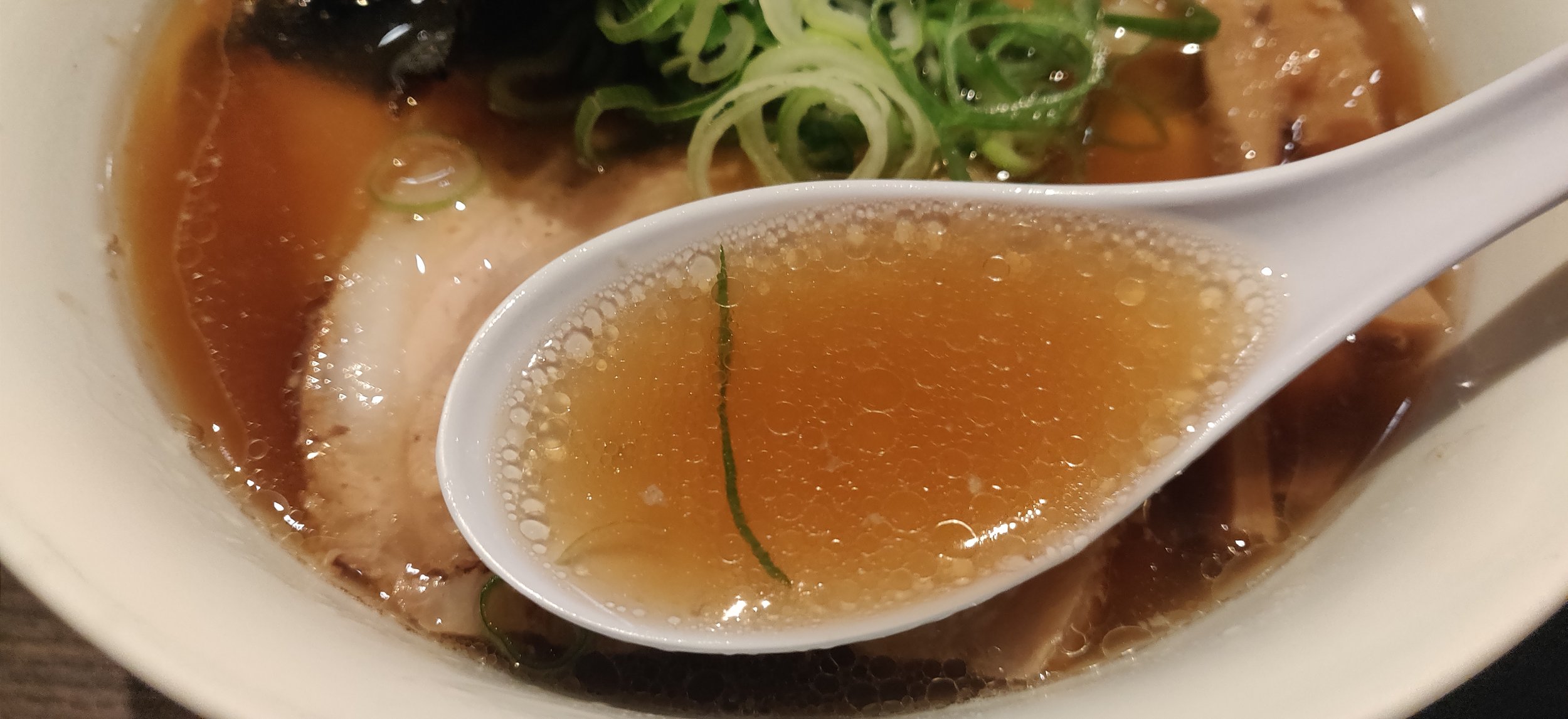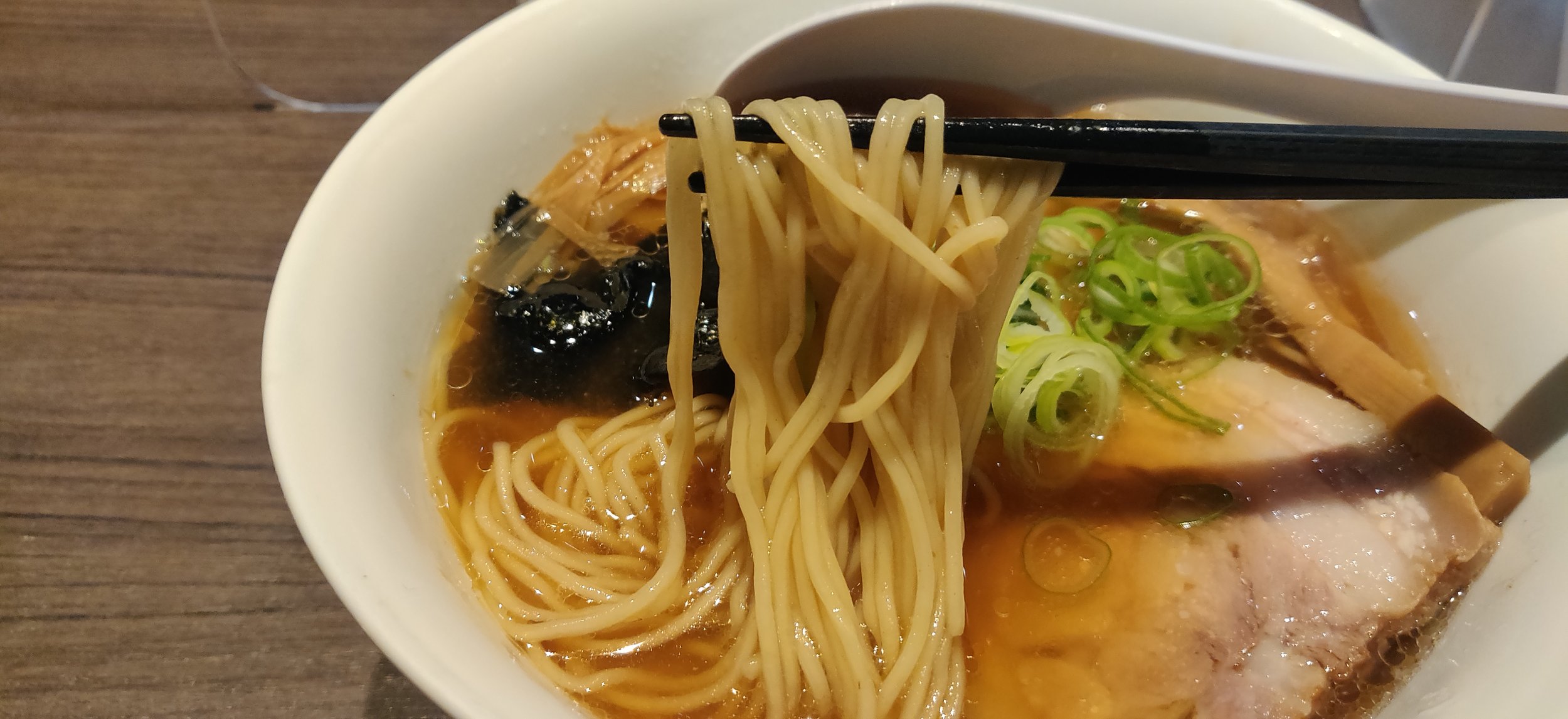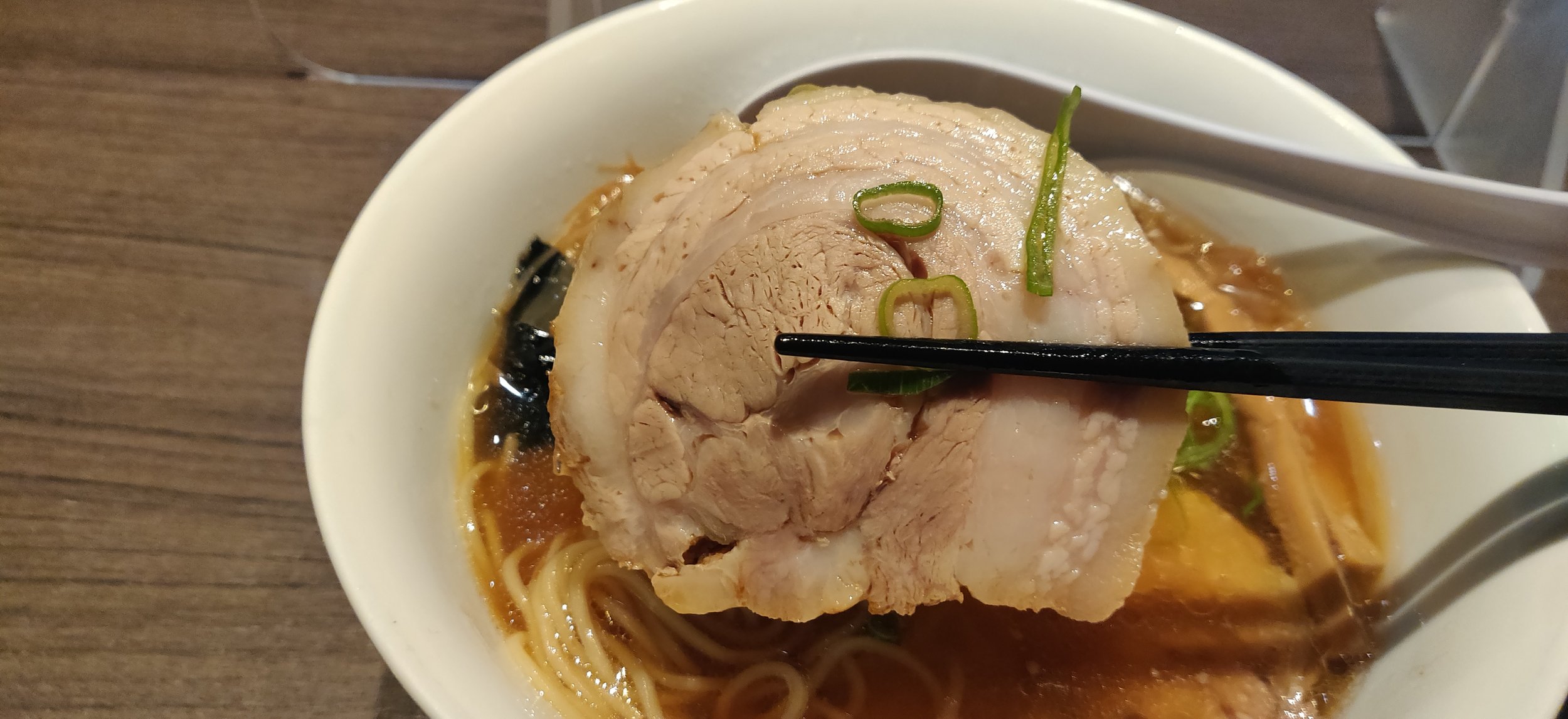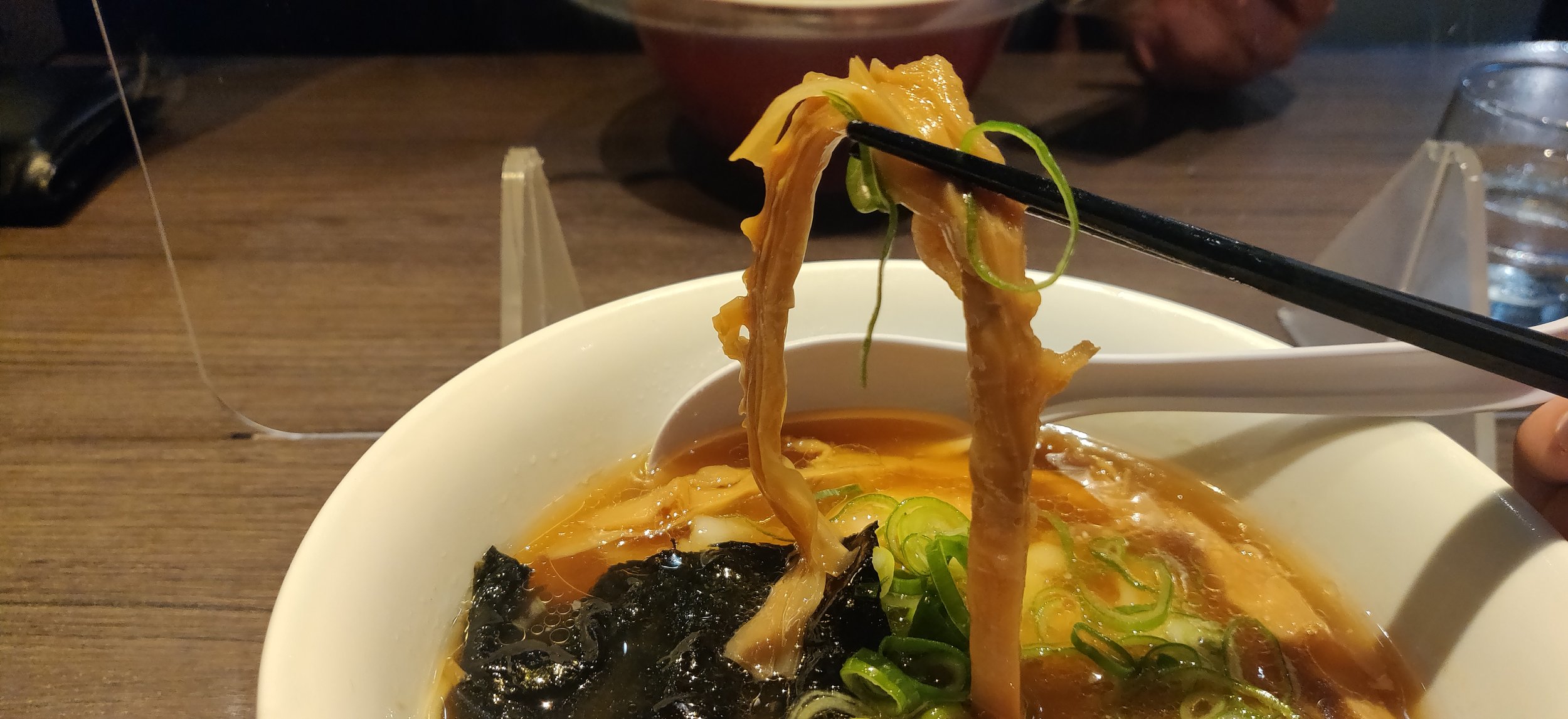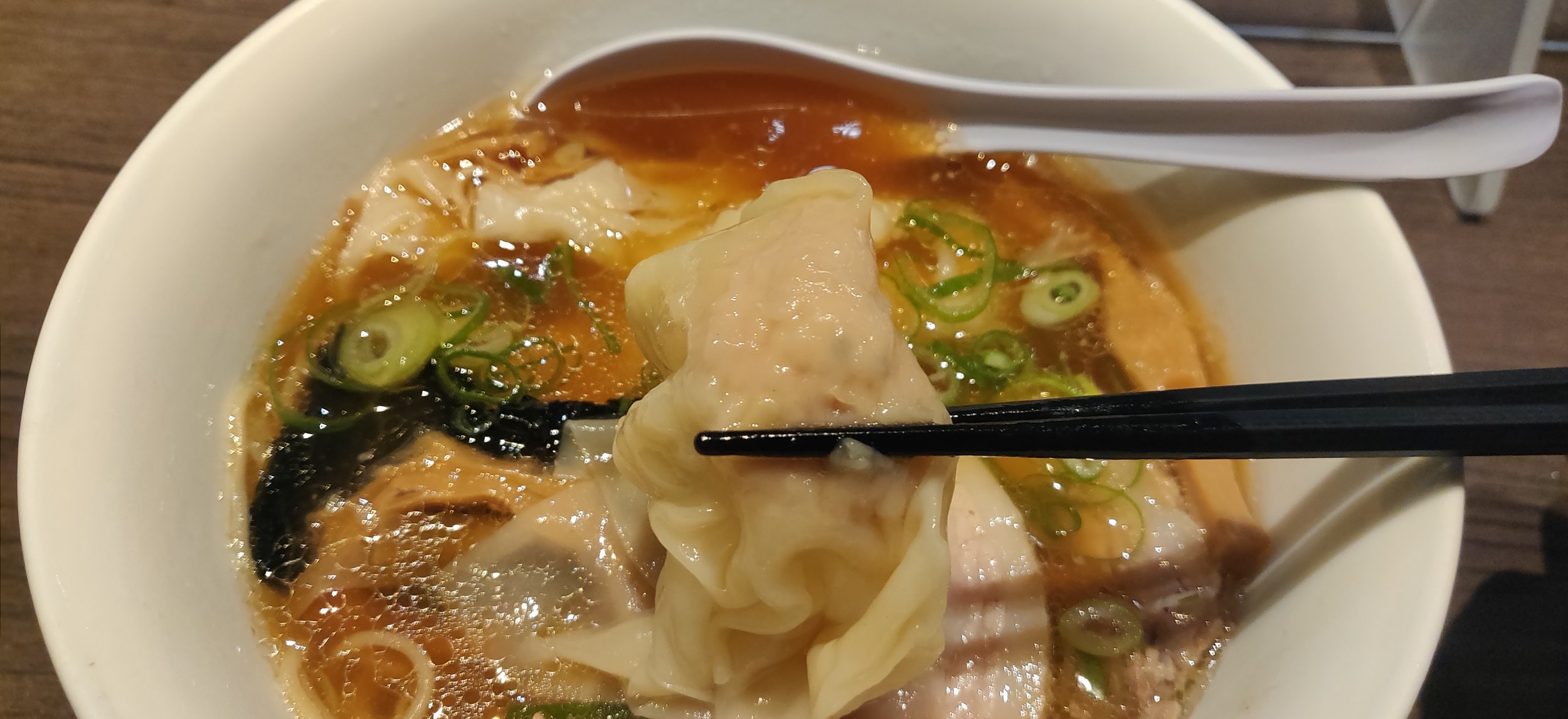Shina Soba-ya (支那そばや): The Ramen Demon; Totsuka, Kanagawa
One of the most polarizing figures in ramen, the late Sano Minoru is best known for his mean attitude and strict demeanor towards guest when he first opened his Shina Sobaya shop back in the mid to late 80s. After an appearance on a popular tv program featuring his shop, Sano Minoru became a fixture in ramen media and continued to run Shina Soba-ya until his death in 2014. Currently the shop is run by his surviving wife and daughter who together operate the different branch locations, manage their instant noodle products, and oversee the renewal open of Rairaiken in the Shin Yokohama Ramen Museum. While you can no longer experience Sano-san make the ramen himself, you can still make a visit to this honten, home location for a bowl similar to what you would have been served a decade prior. Shop is open 7 days a week from 11:00 to 20:30 and is located a short walking distance from Totsuka station.
Given how far this is from central Tokyo, I’m assuming Shina Soba-ya isn’t a hub for foreign clientele as there is no English written on their ticket machine. Lucky for you I’ll roughly translate it for you here. So thankfully the shop color coded their machine with the orange being their Shoyu Ramen and the blue being their Shio Ramen. Starting from the top is a regular ramen, then with wontons, next is with two extra chashu, then an option for 4 extra chashu, and last is a premium chashu cut using a different breed of pork. The pink button to the right of the Shio ramen is a gentei specialty ramen and the bright yellow on the far right are toppings. Starting with the first column is the ajitama soft boiled eff and a slice of pork shoulder chashu below it. To the right of that is the menma bamboo shoots, nori dried seaweed, and wonton. The golden yellow buttons below the toppings are the rice bowl dishes with Nagoya Cochin raw egg over rice on the left and pork chashu over rice on the right. Below that are the takeaway options and the light blue to the left is beer and non alcoholic beer.
So Shina Soba-ya was actually the second shop I hit this day and I ate a bit too much at the first shop so I opted to get just a bowl of Shoyu ramen with wontons. I’ve actually come here years ago to try their Shio so decided to finally try the shoyu for a well rounded experience. After buying my ticket at the machine and handing them over to the wait staff, my bowl was ready in about 10 minutes. Now if you didn’t already know, Sano Minoru is regarded as a pioneer in the ramen industry because he was one of the first chefs to utilize higher end ingredients and to break through the 1000 yen barrier that many shops had followed religiously. The 1000 yen barrier was this saying that ramen shouldn’t cost more than 100 yen. Ramen was considered “street food” and food for the every day people so it shouldn’t cost an arm and a leg for a bowl. However, Sano-san was a self proclaimed ingredient otaku (nerd) who scoured all corners of Japan during his free time to get his hands on whatever unique and high end ingredients he could find. After much thought and research, he collected a number of them to include in his ramen and priced his bowl to reflect what went in them. Initially he was met with skepticism, but slowly Sano-san’s bowl was the talk of the town and huge lines of over 100 people started forming. Sano-san’s popularity and delicious ramen inspired hundreds of chefs some of whom worked directly under him at this very store. Off the top of my head, both masters at Ramen Sugimoto and Ramenya Shima both trained here at Shina Soba-ya.
Back to the ramen at hand. Soup here definitely gives off that elegant, refined vibe with a very light, but impactful chicken soup being hoisted up with a myriad of niboshi and bushi dried fish umami boosters for that puckering finish. It’s not as full bodied as some of the more modern new wave, neo Tokyo Chuka soba you see as of late, but you can definitely tell that this is where those modern shops drew their inspiration from. I thought the soup had a real earthy backdrop to it which I wasn’t a huge fan of, but it did add a ton of flavor complexities that I enjoyed…it made for a much more interesting flavor profile the more I ate it. Shoyu is on the light end of the spectrum which you can really tell just by looking at the photos. Rather than it adding a rich smokiness to the soup, I felt like it was only really there to give the gentle broth some saltiness and infuse it with different glutamates that wasn’t already provided in the stock. My favorite part however was the dried fish notes which honestly carried the soup. Overall however I thought the soup was rather dated and doesn’t stack up to the iterations some of the new, up and coming chefs are pumping out. I can tell this was pretty ground breaking when it was first served many years ago, but it doesn’t feel like the flavors are evolving with the times…possibly a result of Sano-san no longer tweaking the soup as he was known to do.
Noodles are probably the main attraction to the shop and this is definitely one area that hasn’t been lost with the times. Even now, many shops look up to Shina Soba-ya which was one of the first ramen restaurants to invest heavily on making their own noodles. With their state of the art noodle maker, they definitely make some of the best in the biz. In fact, ramen rookie of the year recipient, Shima in Shinjuku still sourced his noodles from Shina Soba-ya. The snappy strands here are bursting with aromatic wheat flour notes that pair magnificently with the light, elegant soup. Each one of their noodle clings and soaks up the soup perfectly and the slurps are unforgettable.
Topping my bowl was a cut of rolled pork belly, hosaki menma bamboo shoots, thinly sliced negi green onions, and my add on wonton topping. Wonton was chicken base which I honestly thought was a good choice given the theme of using high end chicken for the soup and also feels less wasteful as it allows the shop to use all part of the bird. Rolled pork belly was a bit chewy which was a tad confusing since the fat should make up a large portion of the cut. I wasn’t a huge fan of the marinade as well so the chashu wasn’t my favorite. I thought the hosaki menma was pleasant as it gives a texture variety to the snappy noodles and I also enjoyed the crisp freshness of the negi green onions to help cleanse my palette between bites.
All in all, I can say I was glad I made the visit as this shop is so significant to where ramen is today and will forever be ingrained in the culture and history of this dish, but I wouldn’t say this was a mind blowing culinary experience. If you’ve ever read up on or heard about the lore of Sano Minoru and want to check out his shop, I definitely recommend making a visit. It is quite far though from central Tokyo so if your itinerary is limited, I would probably suggest skipping.



